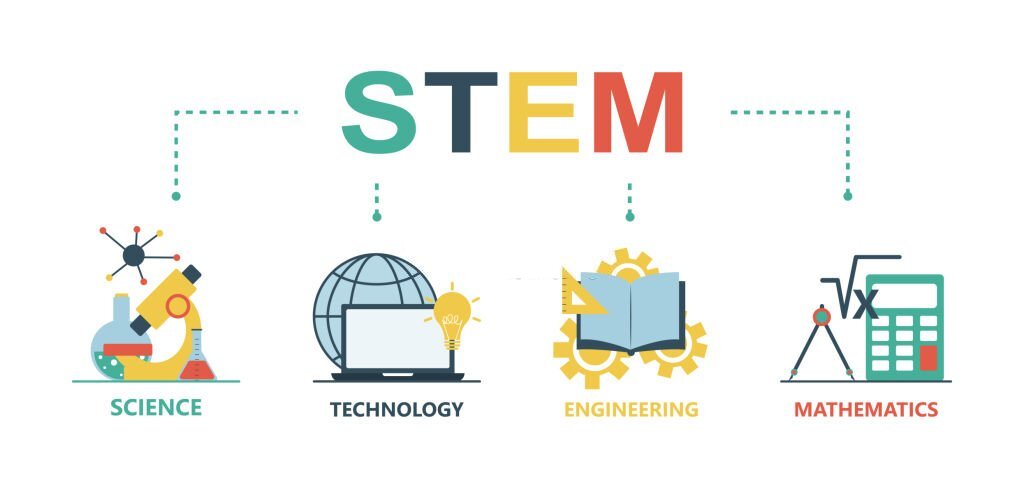Introduction
In an ever-evolving world driven by technological advancements, the integration of arts and design into STEM (Science, Technology, Engineering, and Mathematics) education has become increasingly important. Known as STEAM education, this approach recognizes the value of creativity and innovation in preparing students for the 21st-century workforce. This article explores the benefits of STEAM education and provides strategies for integrating arts and design into the STEM curriculum,
The Benefits of STEAM Education
STEAM education offers numerous advantages for students, fostering their growth as well-rounded individuals and preparing them for future success: Enhanced critical thinking and problem-solving skills: The integration of arts and design into the STEM curriculum encourages students to think creatively and approach problems from multiple perspectives. This enables them to develop innovative solutions, a valuable skill set for tackling complex challenges, including those encountered during online exams.
Fostering creativity and innovation:
By incorporating arts and design elements, STEAM education nurtures students’ creativity and encourages them to think outside the box. This creative mindset promotes innovative thinking, allowing students to devise unique approaches and strategies to excel in their online exams.
Encouraging interdisciplinary collaboration:
STEAM education encourages collaboration between students with different skill sets and perspectives. By working together on projects that combine STEM and artistic elements, students learn the importance of teamwork, communication, and the diverse perspectives needed for successful collaboration during online group exams.
Promoting holistic learning and engagement:
By integrating arts and design into STEM subjects, students engage in hands-on, experiential learning experiences. This approach fosters a deeper understanding of concepts and promotes a more immersive and enjoyable educational journey, making online exams a more engaging and fulfilling experience.
Developing communication and presentation skills:
The inclusion of arts and design in the STEM curriculum requires students to effectively communicate their ideas and present their work. This enhances their communication and presentation skills, valuable assets during online exams where articulating thoughts and demonstrating understanding are crucial.
Strategies for Integrating Arts and Design into STEM Curriculum
To effectively integrate arts and design into the STEM curriculum, educators can employ the following strategies:
Incorporating art and design elements into STEM projects: By adding visual representations and aesthetics to STEM projects, educators can enhance the overall presentation and appeal. Encouraging students to think like artists and designers will further inspire creativity and innovative problem-solving approaches, benefiting students seeking online exam help.
Engaging in project-based learning:
Collaborative projects that require both technical and artistic skills allow students to explore and experiment with different mediums. Providing opportunities for students to receive feedback and iterate on their designs enhances their ability to approach online exams with adaptability and resilience.
Encouraging interdisciplinary connections:
Exploring connections between STEM subjects and art/design disciplines helps students understand the interdisciplinary nature of real-world challenges. Collaborating with professionals from the art and design fields during project implementation can offer students valuable insights and perspectives.
Emphasizing the design thinking process:
The design thinking process, consisting of problem identification, empathy, ideation, prototyping, testing, and iteration, helps students approach challenges with a holistic and innovative mindset. This approach can be applied to online exam preparations, allowing students to approach exam questions from different angles and adapt their strategies as needed.
Overcoming Challenges in Implementing STEAM Education
While the integration of arts and design into the STEM curriculum brings numerous benefits, educators may face challenges when implementing STEAM education.
Overcoming these challenges is essential to ensuring successful integration, particularly in online exam settings:
Addressing resistance to change and traditional educational models: Introducing STEAM education may encounter resistance from educators accustomed to traditional teaching methods. Highlighting the positive impact of STEAM on student engagement and outcomes, including improved performance in online exams, can help alleviate concerns and foster acceptance.
Providing professional development and support for teachers:
Equipping teachers with the necessary skills and knowledge to integrate arts and design into STEM curricula is crucial. Providing professional development opportunities, resources, and a supportive network can empower educators to embrace STEAM education and effectively support students seeking online class help.
Overcoming resource constraints and funding challenges:
Implementing STEAM education may require additional resources, materials, and equipment. Educators can seek creative solutions, such as collaborating with local organizations or leveraging online platforms, to overcome resource constraints and ensure equal opportunities for all students.
Demonstrating the value and impact of STEAM education:
Conducting research, collecting data, and sharing case studies that highlight the positive outcomes of STEAM integration can demonstrate the value of this approach in improving student performance, engagement, and success in online exams.
Case Studies and Success Stories
Numerous schools and organizations have successfully implemented STEAM education, showcasing its positive impact on students’

academic achievements, creative thinking, and problem-solving skills. These success stories, coupled with student achievements and long-term benefits, provide compelling evidence for the effectiveness of STEAM education, including its support for students seeking online exam help.
Conclusion
The rise of STEAM education highlights the increasing recognition of the importance of integrating arts and design into the STEM curriculum. By embracing STEAM, educators can foster critical thinking, creativity, interdisciplinary collaboration, and holistic learning experiences for students. The strategies mentioned, along with the ability to overcome challenges and share success stories, will contribute to the further adoption and implementation of STEAM education. Ultimately, this approach will empower students to thrive academically, creatively, and innovatively, even in the realm of online exams.



